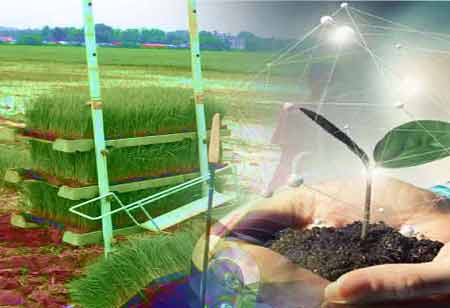Thank you for Subscribing to Agri Business Review Weekly Brief
Irrigation Methods Of The Modern Era
The major goal of irrigation is to produce a better crop with a greater yield.

By
Agri Business Review | Wednesday, November 02, 2022
Stay ahead of the industry with exclusive feature stories on the top companies, expert insights and the latest news delivered straight to your inbox. Subscribe today.
The major goal of irrigation is to produce a better crop with a greater yield.
FREMONT, CA: The major goal of irrigation is to produce a better crop with a greater yield. Hence, adequate design, building, and irrigation practices are important. Unfortunately, maintenance, or a system's continuous maintenance to keep it running as effectively as possible, is regularly overlooked. This leads to reduced irrigation efficiency and, consequently, less irrigation benefit. The irrigation methods can be divided into four main types.
1. Surface Irrigation
It is one of the most general methods of irrigation. Here water is used to the soil with the support of gravity. Since water distribution is not regulated, surface irrigation is also called flood irrigation.
This irrigation system is further categorized into three other types of modern irrigation methods. These are as follows –
1. Furrow –
Water is channeled through deep channels at an angle and evenly spaced out in furrow irrigation. Water is supplied in various ways, such as siphons, main ditches, gated pipes, etc.
Inflow rate, soil infiltration, slope & shape of furrows, and surface roughness decide the speed of the water. It needs less capital investment but is one of the most labor-intensive irrigation methods.
2. Basin and Border Irrigation
These techniques involve water running through the soil. Still, in basin irrigation, water is dispensed to a field which may affect the outcome of ponding for a while. Conversely, water flows through ditches, ultimately blowing the ground with a drainage system.
3. Sprinkler System
Here, revolving nozzles connected to pipelines, water droplets are sprinkled throughout the landscape like raindrops. The pipelines are linked perpendicular to a field-installed main pipeline. Sprinkler irrigation enables you to rinse areas too irregular to be irrigated with conventional methods. Some advantages of this system are as follows.
•It's best for sandy soil and rough terrain.
•Plants/crops are guarded against harsh colds or temperatures.
•A sprinkler system can be utilized to apply fertilizer and pesticides.
•It helps with soil conservation.
4. Drip System
Water flows through narrow pipelines concealed in the ground and drips through small holes or emitters near plant roots. The water absorbed by the roots nurtures the plant. With this tactic, there is no water waste as less water is lost to evaporation, runoff, and wind. Some benefits of this system are:
• Water is conserved by optimizing soil moisture.
• For plant health, direct watering of plant roots is necessary.
• Weed development is inhibited as water is supplied directly to plants rather than distributed throughout the field.
• Bacterial growth is reduced since the space around the plants is dry.
Importance of Irrigation
1. Redress for when there isn't Any Rain- When there isn't adequate rain or no way of learning when it will rain, irrigation is activated. Without rain or irrigation as a substitute, crops suffer, perhaps causing a food deficit or crop/plant failure.
2. Growing the Amount of Land that Can be Cultivated or Utilized for Agriculture- Some regions of the planet are normally dry. The key to turning these plains into productive ones was irrigation. Irrigated cropland now accounts for hardly 18% of all cropland on the planet. Irrigation is also accountable for making the most of fallow areas left inactive after harvest until the next farming season.
3. Productivity Improvements- When insufficient rainfall, irrigation is used by default and in many cases. It can still be used anytime, even if sufficient rain raises agricultural productivity.





